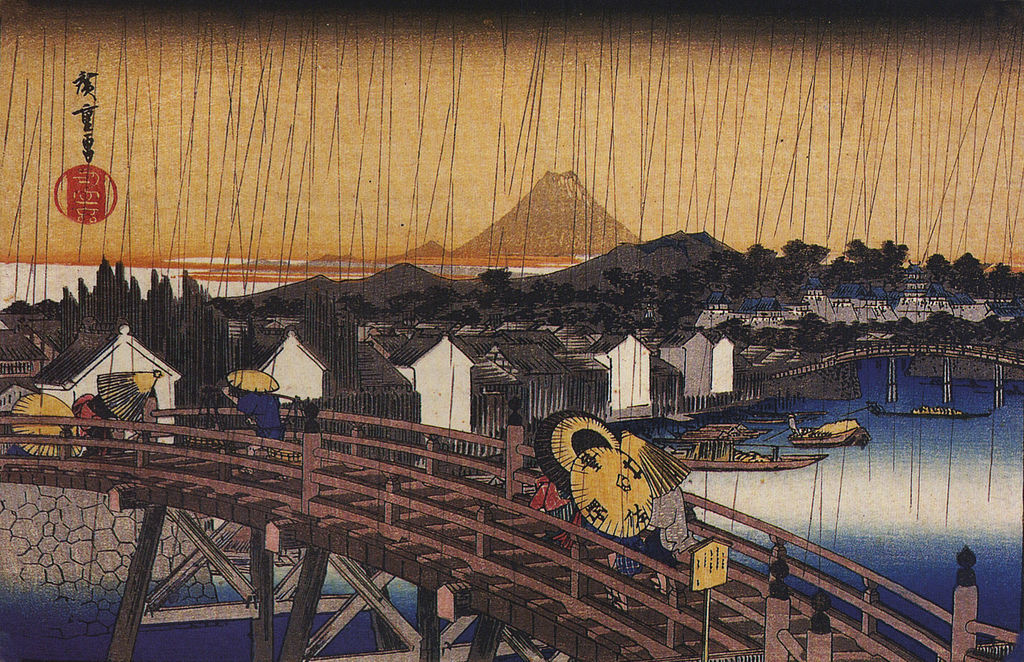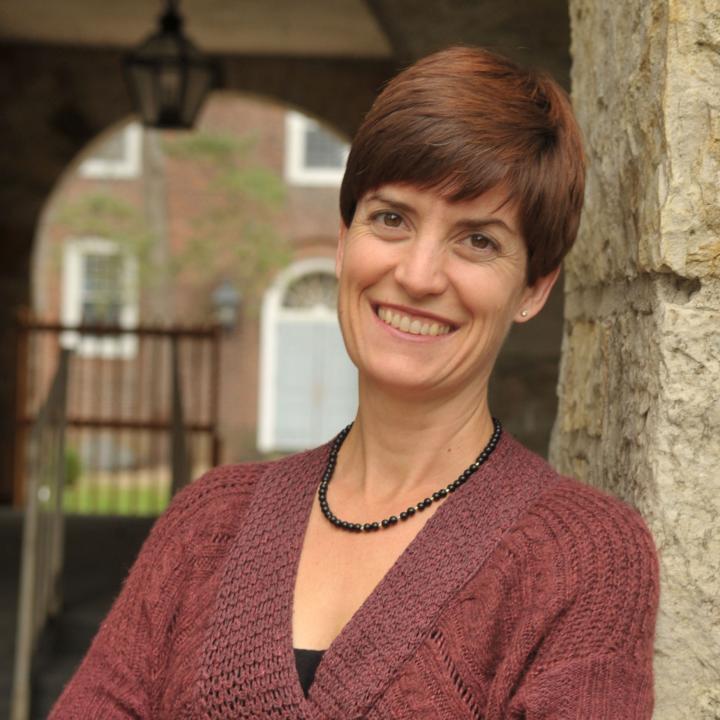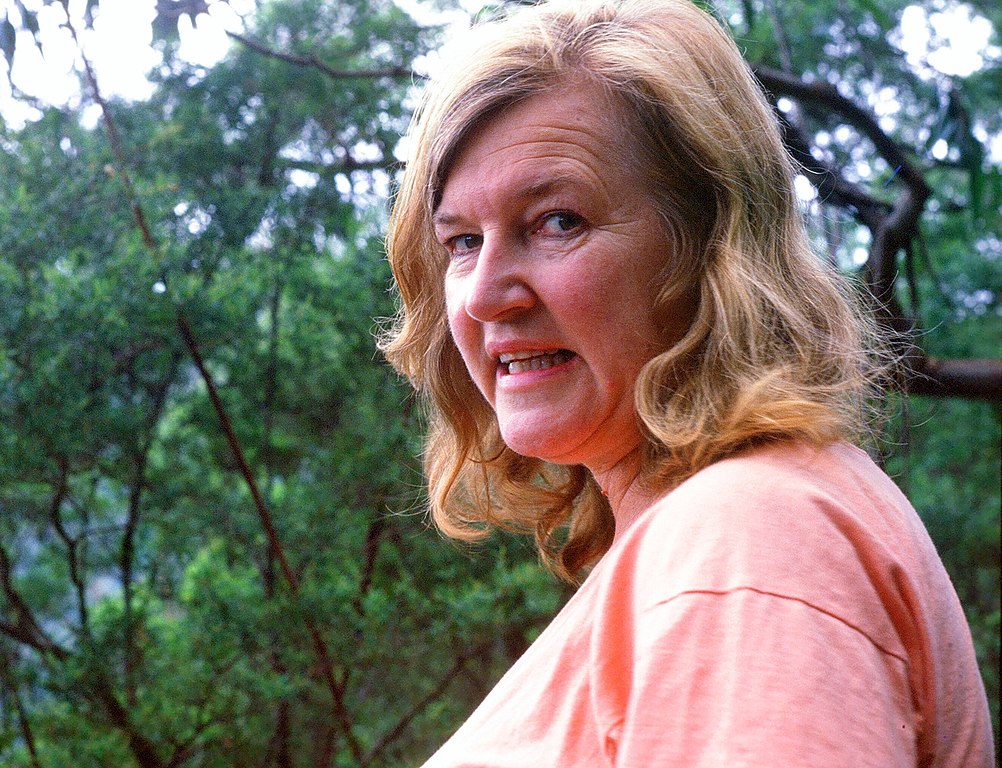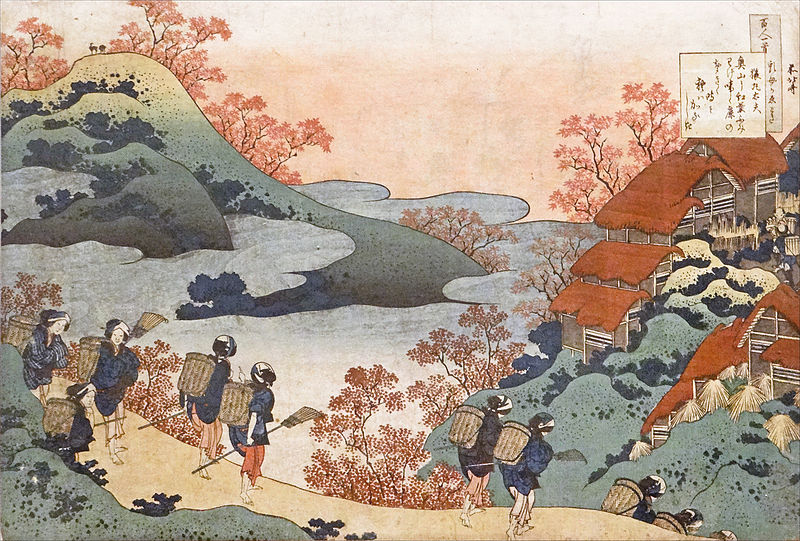
“Our embodied nature thus extends beyond what we normally consider to be corporeal boundaries to include betweenness with nature, the world of things, history, and relationships with other human beings. As ningen, we relate to both milieu and to other human beings through our bodies. If we take Watsuji’s nondualism seriously, we see our body as an extension of ourselves (rather than our “selves as somehow transcending the body”) and view it as including and extending out into an intimate part of the milieu in which we live” (Erin McCarthy).
Even though the words “aidagara” (betweenness) and “ningen” (nin, meaning “person” or “human being,” and gen, meaning “space” or “between”: the word is usually left untranslated), are not found in Fudo, Erin McCarthy chose to analyse Fudo in terms of these two concepts which are ubiquitous in Watsuji’s later Ethics.

As noted in “Fudo as Philosophy in the Midst” – McCarthy fully supports Augustin Berque’s translation of fudo as “milieu” and “fudosei” as “mediance.” She writes: “For Watsuji, the notion of fudo is supposed to suggest that the spatial, environmental, and collective aspects of human existence are all intertwined in the complex concepts of fudosei or mediance. Etymologically, milieu can be traced back to ‘middle’, but it later came to mean one’s surroundings, including the environmental and social.”
In a note, however, McCarthy criticises Berque’s dismissal of the actual presentation of various climates – monsoon, desert, and meadow as “traditional geographic determinism” and argues that “this critique may be too hasty.” Kasulis had also referred to Watsuji as being at times “cavalier” in the examples of milieus he provides to illustrate his method. McCarthy accepts that “there may be some truth to this,” but points out that, at the end of the second part of Fudo, Watsuji “clearly states that, in becoming aware of climatic influence, we are in a better position to not be one-sidedly determined by climate.” Talking about “meadow,” in Fudo, Watsuji says: “I do not claim that this climate was the sole source of European culture. History and climate act as the shield and buckler of culture … When humans become aware of the deep roots of their existence and express this awareness in an objective manner, the manner of that expression is not only historically but also climatically determined” (translation by Bret Davis).
Embodiment
McCarthy states: “A crucial aspect of both ningen and milieu is embodiment. Watsuji, like Heidegger, wanted to avoid the dualism associated with the mind-body problem … While Heidegger chose to ignore the body as a problem, Watsuji takes a different approach: “the crux of the problem becomes the realisation that body is not mere matter; in other words, it is the problem of the self-active nature of the body” (Fudo) The body cannot be pinned down as mere matter, as an object or tool for the mind; rather, mind and body work in concert. It is a “both/and” rather than an “either/or” relationship – that is, body is part of self just as much as mind. He goes on to say that “the self-active nature of the body has as its foundation the spatial and temporal structure of human life; a self-active body cannot remain in isolation for its structure is dynamic, uniting in isolation and isolated within union” (Fudo). Watsuji’s explicit inclusion of the body as another dimension of the self, in addition to the natural and social milieus, will allow McCarthy to introduce Watsuji’s understanding of the self as a source for feminist scholars. In the West, the sense of the self as separate from the body has come hand in hand with that of its sense of separation from nature and society.
McCarthy continues: “Our embodied nature thus extends beyond what we normally consider to be corporeal boundaries to include betweenness with nature, the world of things, history, and relationships with other human beings. As ningen, we relate to both milieu and to other human beings through our bodies. If we take Watsuji’s nondualism seriously, we see our body as an extension of ourselves (rather than our ‘selves’ as somehow transcending the body) and view it as including and extending out into an intimate part of the milieu in which we live.” Both the natural environment and the body have been regarded as mere matter that can be viewed objectively. So, the self-active nature of the “body” has to be retrieved in the same sense as the self-nature of fudo has to be.
McCarthy also observes that “Dualistic philosophies that separate time from space, mind from body, humans from milieu serve to devalue or subordinate the second term in the pair. Watsuji’s ningen and fudo correct this, not by reversing it, but by retrieving body and milieu as subjects as well as objects, giving us a fuller picture of human being in the world, one that is not limited by the constraints of a dualism that is exclusive but is rather embedded in a radical nondualism, rooted … in the Buddhist concept of emptiness.”
Watsuji’s Nondualism: Rooted in Emptiness
Emptiness? So, this is where we get to see for ourselves that, when “working alongside Nishida Kitaro, Tanabe Hajime, and Nishitani Keiji, “the influence and tone of [Watsuji’s] work clearly show him to be a like-minded thinker”? Like-mindedness in the case of the Kyoto School means putting emptiness (or absolute nothingness) at the very centre of one’s philosophy. Of course, betweenness is emptiness, as Nagarjuna had said: “It is dependent origination that we call emptiness.” Dependent origination is emptiness, so emptiness is relationality, and relationality is betweenness.
As they were originally based on the practice of ascetics living outside society, Buddhist teachings focused on the individual’s quest for liberation. Whereas, to a large extent, Nishida and his direct disciples have retained this focus on the individual, Watsuji’s starting point, perhaps closer to what had been the focus of the Huayan school on the interpenetration of phenomena, is on the community, its milieu, and the interdependence of its members.
McCarthy writes: “There are at least two layers of betweenness at work in ningen and milieu. The first is within the individual, where body and mind are not separate. The second is in relation to other humans and to living nature and the world of things in the betweenness of our relationships, all of which are mediated through the body.” This second level was missing in traditional Buddhist teachings as society was viewed as beyond the reach of ordinary people. It has often been noticed that the Buddha had abolished the caste system within the Sangha, but had not attempted to launch a political movement to have it abolished at the level of society. Even Asoka, the emperor who had launched Buddhism as a religion for the laity, had focused on animal welfare (restriction on hunting, switch to a vegetarian diet) rather social values.
McCarthy explains: “Watsuji’s nondualistic concepts of self and milieu stand in sharp contrast to dominant Western notions of self (and ethics), which are dualistic. A view is dualistic if it conceives of the self, and consequently the world, in terms of the dichotomies and mind and body, self and other, and so on … Non-dualism, on the other hand, rejects the sharp distinctions between body and mind, self and other, and subject and object. In each case … it is a matter of both/and rather than either/or. That is, nondualism allows for difference to be retained even as it is transcended – in other words, nondualism is not the same as monism or holism, neither the whole nor its parts are given priority. In Watsuji’s view then, self is constituted by both mind and body at the same time, and neither is more important or fundamental to the self than the other. Watsuji’s nondualistic concept of self also views each person’s ethical identity as integrally related to that of others and extends it beyond merely human relations … to encompass the world in which we live – it is part of milieu.”
McCarthy integrates here insights into Watsuji’s ethical thought that are fully developed in Rinrigaku. While the focus there is on “the dynamic tension between the individual and social aspects of ningen … the necessity of continuing to move between … two poles,“ also applies to the relationship between the individual and its milieu. When, later, McCarthy compares Watsuji’s philosophy with feminist philosophy, it becomes clear that what is often referred to in Buddhism as the “true self” (reality as a whole), and in Christianity as a “union with God,” (as the whole) is not a mere fusion with the world that erases one’s individuality. As McCarthy notes above “nondualism allows for difference to be retained even as it is transcended.” Watsuji talks about what he calls a “double negation” (niju hitei) in the back-and-forth movement between the two poles. In Watsuji’s words: “the negative structure of a betweenness-oriented being is clarified in terms of the self-returning movement of absolute negativity through its own negation” (Rinrigaku). McCarthy notes that “We can relate both this notion of emptiness or negation in Watsuji’s ningen and the interdependence we find in his betweenness philosophy of ningen and milieu to the Mahayana Buddhist notions of co-dependent origination and emptiness.”
“In Fudo,” McCarthy adds, “Watsuji emphasizes nonduality and emptiness, writing that for “a true and full understanding, one must treat man both as individual and as whole; it is only when the analysis of human existence is made from this viewpoint that it becomes evident that this existence is completely and absolutely negative activity” (Fudo).
Milieu, Ningen, and Environmental Ethics
At this point, McCarthy turns to Berque who, in spite of his harsh critique of Watsuji’s actual studies of the monsoon, desert, and meadow climates he came across during his trip back to Japan, had put Watsuji’s thought at the very centre of his “mesology.” In Berque’s assessment of the issue, McCarthy says, “there are two basic approaches in environmental ethics.”In Berque’s words: “These positions extend between two theoretical extremes, one of which would be humanity’s subordination to the biosphere, and the other subordination of environmental issues to humanity’s interests. In general the first set of views is labeled holism and the second anthropocentrism …” Environmental ethics “comes up against a basic aporia as soon as it is developed a little further: at one and the same time acknowledging that in a sense the human transcends nature and that in another sense the second subsumes the first” (Berque 2005). Berque thinks that Watsuji’s concepts of milieu and ningen can allow us to go beyond this aporia, because, as McCarthy explains, in his view, the real problem lies “in being forced to choose between setting humans apart from nature or erasing any difference between humans and nature – as arising out of dualism. And Watsuji tells us that “we are not forced to take sides in these untenable debates.” Berque writes:
“This aporia arose from the fact that a being limited by the individual horizon of the Cartesian ‘I’, and even Heidegger’s Dasein, cannot structurally operates a moral rule requiring that one take account of what is beyond that horizon: the environment (or fudo in Watsuji’s vocabulary), which in time as well as space, goes beyond the western modern individual topos. However, seeing this context not as external to our being (in the form of the objectal environment), but as constituting it no less fundamentally than the identity of our topos, allows us to carry out a decentering process that is as decisive as the one that inaugurated modern times – the Copernican revolution. (Berque 2005)
Parallels between Watsuji’s thought and that of feminist philosophy
As a “decentering” of the self, Watsuji’s view of nature “from the perspective of ningen and milieu is neither outside of us nor identical to us,”which, according to McCarthy is “a view that characterizes the human/nature relationship in much of Japanese thought.” According to her, it is also a view that is found in current feminist philosophy. Here she gives the example of Val Plumwood, whom she describes as a feminist environmental philosopher. In her book Embodied Ethics, McCarthy also devotes a chapter to the ideas of French philosopher Luce Irigaray.

In her groundbreaking essay, “Nature, Self, and Gender: Feminism, Environmental Philosophy and the Critique of Rationalism,” Plumwood writes that environmental ethics faces a key problem: “the view of nature as sharply discontinuous or ontologically divided from the human sphere [which leads to the view of] humans as apart from or ‘outside of’ nature usually as masters or external controllers of it.” “Like many other feminist philosophers,” McCarthy writes, “Plumwood observes that the traditional dualism of man and nature can be mapped onto the homologous hierarchical dichotomies of male-female, reason-emotion, and so on. In these dichotomies, we recall, each side is set up in opposition to the other. As Plumwood points out, the dominant mode of analysis is reason, and women and nature have been denied possession of such a faculty: “It is in the name of such a reason that these other things – the feminine, the emotional, the merely bodily or the merely animal, and the natural world itself – have most often been denied their virtue and been accorded an inferior and merely instrumental position.”
This, of course, “echoes Watsuji’s critique of the term ‘environment’ as something outside of the world of human experience” who holds that “dualism tends to priviledge one of the dichotomous terms over the other, time over space, mind over body, subject over object, man over woman, self over other, human over nature.” At the same time, however, it would also be an error to fall into a “oneness” that erases all differentiation. So, Plumwood calls for a concept of self “that enables a recognition of interdependence and relationship without falling into the problems of indistinguishability, that acknowledges both continuity and difference, and that breaks the culturally posed the false dichotomy of egoism … it bypasses both masculine ‘separation’ and traditional-feminine ‘merger’ [undistinguishability] accounts of the self” (Plumwood). McCarthy believes that “Watsuji’s fudo and ningen provide the framework for such an account of self” as it “preserves individuality” while recognising that one is being shaped by both the milieu and other human beings. She in fact, again, states that “this nonduality between self, nature, and freedom can be found throughout Japanese thought.”
Once again, what is proposed here is a nondualist understanding of reality – or should we rather say “life,” as the word “life” has dynamic connotations that are missing in the word “reality,” which tends to evoke the image of a monistic, fixed, order of the universe. So we see how close Watsuji’s thought really is to the Kyoto School’s emphasis on nonduality, encapsulated in Nishida’s well-known statement that the world is “the many as the self-negation of the One and the One as the self-negation of the many,” without ever giving priority to either the One or the many. Or, as Davis puts it, “The true self is a part of nature, but it is a part that dynamically stands out from and returns to nature. Natural freedom is not a static state of being but rather a dynamic dialectic of existence and return.”
Sources
Erin McCarthy – “Watsuji Tetsuro – Mutuality of Climate and Culture and an Ethics of Betweenness” in The Handbook of Japanese Philosophy, edited by Bret W. Davis (also available in academia-edu)
Watsuji Tetsuro – Fudo, translated as Climate and Culture by Geoffrey Bownas – Tetsuro_Watsuji_A_Climate_A_Philosophical_Study.pdf
Watsuji Tetsuro’s Rinrigaku: Ethics in Japan, translated by Yamamoto Seisaku and Robert E. Carter
Quotes from Augustin Berque’s texts (1994, 2004 and 2005)
Valerie Plumwood – “Nature, Self, and Gender: Feminism, Environmental Philosophy and the Critique of Rationalism” Hypatia
Bret W. Davis – “Natural Freedom, Human/Nature Nondualism in Zen and Japanese Thought” in the Oxford Handbook of Japanese Philosophy

